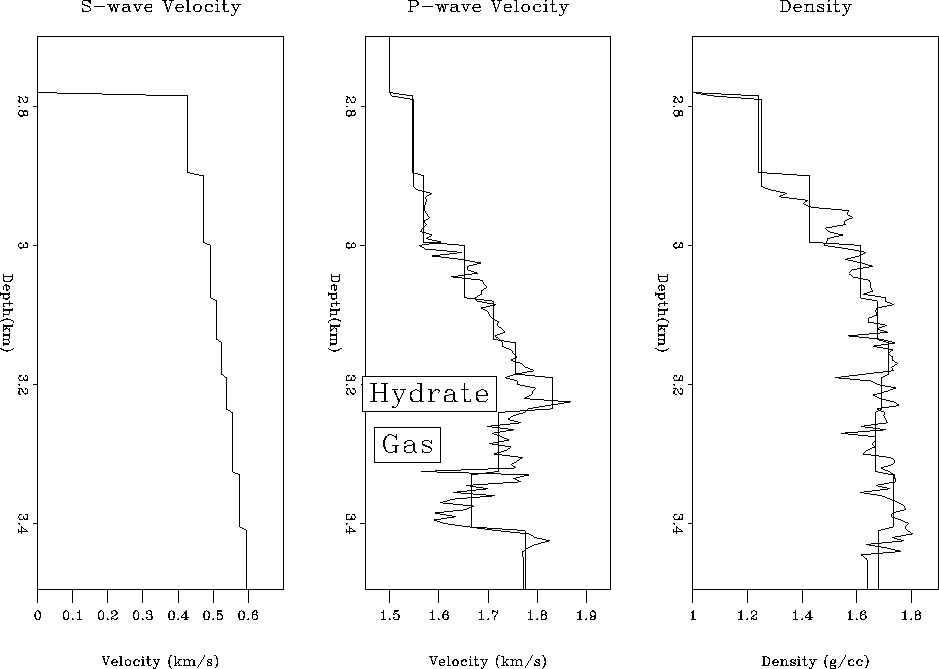 |
Figure 1 The left panel shows a blocked approximation to the shear wave log. The middle and right panel show the upscaled acoustic and density log and the subsequent blocked model.
I use sonic and density logging data from the ODP drilling cruise at the Blake Outer Ridge Matsumoto et al. (1996) to evaluate the effect of different S-wave velocity contrasts at the transition from hydrate to non-hydrate bearing sediment. Since the drilling was performed in the vicinity of multi-channel surface seismic data that were provided to me by the USGS Ecker et al. (1996); Ecker and Lumley (1994), the drilling results will provide some further insight into the possible interpretation of the seismic data.
The fine layered sonic and density logs were upscaled to about 5 m in depth to be comparable with the seismic wavelength scale. For the upscaling, I used an equivalent medium averaging approach Lumley et al. (1994); Muir et al. (1992). Since the dipole shear data are not yet publically available, I estimated an approximately linear trend to the preliminary published shear data and extrapolated it to the seafloor. As this study requires the changing of the S-wave velocities across the BSR, I blocked the data in order to create a better control over the velocity substitution. The blocking was done by averaging the data within layers of variable thickness. The upscaled and subsequently blocked data can be seen in Figure 1.
 |
The well data show an increase in acoustic velocity in the hydrated sediments and a decrease in the underlying sediments which are gas saturated. This is in good agreement with surface seismic observations in the area Ecker and Lumley (1994); Katzman et al. (1994); Wood et al. (1994). Furthermore, there is a small decrease in density at the BSR due to the fact that the hydrate density is higher than the gas density. The approximated shear wave data show overall a very low S-wave velocity trend. The drilling showed that the sediments in this area are highly unconsolidated (porosity more than 50%) and contain a significant amount of clay. Thus, Poisson's ratios of more than 0.4 does not seem surprising.